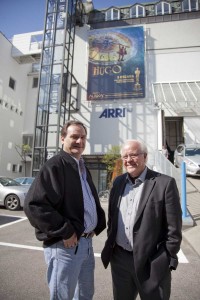
First on the stage was Trumbull, whose pioneering work in the field dates back almost 50 years and has inspired many of the current generation, including Legato, to pursue careers in visual effects. Notable credits from Trumbull’s distinguished career include The Andromeda Strain (1971), Close Encounters of the Third Kind (1977), Star Trek: The Motion Picture (1979) Blade Runner (1982) and The Tree of Life (2011). He also directed Silent Running (1972) and Brainstorm (1983).
Trumbull’s first experience in the movies came when Stanley Kubrick recruited him to work on 2001: A Space Odyssey (1968), which sparked an interest in immersive cinema that continues to this day and featured in his presentation at ARRI. One of the subjects on which he spoke was that of shooting at higher frame rates such as 60 fps for improved image quality, an idea that he pioneered 30 years ago and that top directors today, including James Cameron and Peter Jackson, are now pursuing.
Rob Legato followed Trumbull’s talk with a presentation about his work on Martin Scorsese’s 3D film Hugo (shot with ARRI ALEXA cameras supplied by Cameron Pace Group), for which he was awarded, earlier this year, his second Academy Award for visual effects. Legato’s previous credits include such groundbreaking films as Titanic (1997), Harry Potter and the Philosopher’s Stone (2001), Avatar (2009) and Shutter Island (2010).
Legato spoke on stage about the challenges of working with a director as exact and demanding as Scorsese, and showed clips that broke down into their myriad component elements some of the complex effects shots in Hugo, including an amazing opening shot that starts high above Paris, swoops down through a train station and ends in close-up on the eyes of a small boy hiding behind a clock that overlooks the station concourse.





